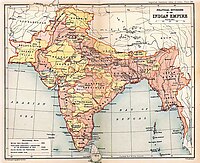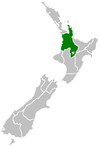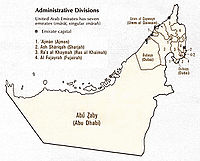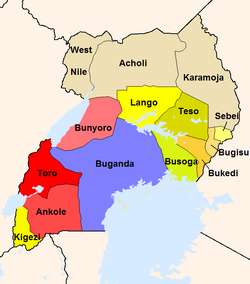Non-sovereign monarchy
| Part of the Politics series |
| Monarchy |
|---|
 |
|
|
| Part of the Politics series |
| Basic forms of government |
|---|
| List of countries by system of government |
|
|
A non-sovereign monarchy, subnational monarchy or constituent monarchy
Structure and forms


This situation can exist in a formal capacity, such as in the
Systems of both formal and informal suzerainty were common before the 20th century, when monarchical systems were used by most states. During the last century, however, many monarchies have become republics, and those who remain are generally the formal sovereigns of their nations. Sub-national monarchies also exist in a few states which are, in and of themselves, not monarchical, (generally for the purpose of fostering national traditions).
The degree to which the monarchs have control over their polities varies greatly—in some they may have a great degree of domestic authority (as in the United Arab Emirates), while others have little or no policy-making power (the case with numerous ethnic monarchs today). In some, the monarch's position might be purely traditional or cultural in nature, without any formal constitutional authority at all.
Contemporary institutions
France

The territory was annexed by the French Republic in 1888, and was placed under the authority of another
Malaysia
A number of independent
The two-halves were united for the first time with the formation of Malaysia in 1963. Modern Malaysia is a
New Zealand

The Māori of New Zealand lived in the autonomous territories of numerous tribes, called iwi, before the arrival of British colonialists in the mid 19th century. The Treaty of Waitangi, signed in 1840 by about a third of the Māori chiefs, made the Māori British subjects in return for (theoretical) autonomy and preservation of property rights. British encroachment on tribal lands continued, however, leading to the creation of the King Movement (Māori: Kīngitanga) in an attempt to foster strength through intertribal unity. Numerous tribal chiefs refused the mantle of King, but the leader of the Tainui iwi, Pōtatau Te Wherowhero, was persuaded, and was crowned as the Māori king in 1857. The federation of tribes supporting the king fought against the British during the territorial conflicts known as the New Zealand Wars (which resulted in the confiscation of four million acres (16,000 km²) of tribal land), not emerging from their refuge in the rural region known as King Country until 1881.
The position of the Māori monarch has never had formal authority or constitutional status in New Zealand (
The seventh and current Māori king is
Nigeria
The non-sovereign monarchs of
South Africa

The
The Zulu kings remained pretenders to their officially abolished thrones during the 20th century, but were granted official authority by the Traditional Leadership Clause of the republican Constitution of South Africa.[5] The constitution recognizes the right of "traditional authorities" to operate by and amend systems of customary law, and directs the courts to apply these laws as applicable. It also empowers the national and provincial legislatures to formally establish houses for and councils of traditional leaders. The Zulu king is head of this council of tribal chiefs, known as the Ubukhosi.
The current Zulu king is Misuzulu Zulu, who reigns as king of the Zulu nation, rather than of Zululand, which is today part of the South African province of KwaZulu-Natal. Zulu ascended the throne in 2021.
United Arab Emirates

The numerous small sheikdoms on the Persian Gulf were under informal suzerainty to the Ottoman Empire during the 16th century. Later, this dominance gradually shifted to the United Kingdom. In 1853 the rulers signed a Perpetual Maritime Truce, and from that point onward delegated disputes between themselves to the British for arbitration (it is from this arrangement that the territory's former title, the "Trucial" States was derived). In 1892 this arrangement was formalized into a protectorate in which the British assumed responsibility for the emirate's protection. This arrangement existed until 1971, when the U.A.E. was granted independence.
The U.A.E.'s system of governance is unique, in that while the seven constituent emirates are all absolute monarchies, the structure of the federal government itself is not (theoretically, at least) monarchical, as it is in Malaysia. Instead, the formal governmental structure has features of both
The U.A.E does possess a weak legislature, called the National Federal Council, which is partially elected and partially appointed, but neither the legislature nor the population at large has a hand in determining the country's political leadership. In the U.A.E., it is the Federal Supreme Council (a sort of "upper" cabinet made up of the seven emirs), which elects both the head of state (the president) and the head of government (the prime minister), both of whom have considerable governing power, to five-year terms. This is a purely formal election, however (similar to the later royal elections of Polish kings), as the rulers of the two largest and wealthiest emirates, Abu Dhabi and Dubai, have always held the posts of president and prime minister, respectively. This Council also elects the lower cabinet, the Council of Ministers, as well as the judges of Supreme Court.
The seven constituent emirates of the U.A.E. are
Uganda

In 1888, during the
Shortly after achieving independence, Uganda became a republic, and its first years were characterized by a power struggle between the
Restoration of the traditional monarchies came in 1993. The restored monarchies are cultural in nature, and their kings do not have policy-making power. The Kingdom of Rwenzururu, which did not exist before the 1966 abolition, was officially established in 2008. The areas which now make up the kingdom were formerly part of the Kingdom of Toro. The region is populated by Konjo and Amba peoples, whose territory was incorporated into the Kingdom of Toro by the British. A secession movement existed during Uganda's early years of independence, and after a 2005 report from the Ugandan government found that the great majority of the regions inhabitants favored the creation of a Rwenzururu monarchy, the kingdom was recognized by the Ugandan cabinet on March 17, 2008.[6]
References
- ^ Luigi Lacche, Granted Constitutions. The Theory of Octroi and Constitutional Experiments in Europe in the Aftermath of the French Revolution Archived 2022-02-22 at the Wayback Machine, 9 EuConst 285 (2013).
- ^ a b "Wallis and Futuna". The World Factbook. CIA. 25 March 2022. Archived from the original on 24 April 2021. Retrieved 12 June 2022.
- ^ a b "A challenge to European authority? - Maori King movement". New Zealand history online. Archived from the original on 2016-08-18. Retrieved 2010-04-19.
- ^ "New Zealand Maori choose new king". BBC News. August 21, 2006. Archived from the original on April 13, 2021. Retrieved April 19, 2010.
- ^ Constitution of South Africa, Clause 12, Traditional Leadership
- ^ "Cabinet recognises Obusinga Bwa Rwenzururu". Ugee. March 31, 2008. Archived from the original on July 17, 2011.
